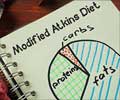Digestion of Carbohydrates and its Metabolism into Fat
The process of carbohydrate digestion starts in the mouth; the food then moves in to the stomach, and then to the small intestine. Food is digested preliminarily by enzymes, which are similar to catalysts and responsible for chemical changes without being changed themselves. Enzymes are essential for breaking down carbohydrates into forms that can be absorbed by the intestine and be used by the body. They are generally named by adding “ase” to the name of the substance they act on e.g., lactase is the enzyme needed to metabolize lactose. The enzymes involved in the breakdown of carbohydrates are sucrase, lactase, and maltase - they break down the simple sugars into absorbable units. Inadequate enzyme production results in a pathology known as “carbohydrate intolerance”.
The formation of fat in the body by dietary carbohydrate is known as de novo lipid formation or lipogenesis. The kind of carbohydrate consumed, the quantity and the metabolic condition of the individual all determine fat production in the body. An important relationship exists between the glycemic index of the carbohydrates consumed and its ability to catalyze the production of fat in humans. Since obesity is being increasingly prevalent globally, the lipogenic capacity of certain foods, their dietary patterns and the metabolic states of insulin resistance are all contributory factors to lipogenesis and obesity. The glucose which is not immediately required by the body or the excess glucose is converted by the process of glycolysis into pyruvates which enters the Krebs cycle or citric acid cycle forming acetyl Co A which is then converted into fatty acids. This process is irreversible and involves important metabolic changes. The hydrogen atom present in carbohydrates is carried to the electron transport chain where ATP molecules are formed by which energy is conserved.
The body is incapable of storing carbohydrates in the form of simple sugars which are the primary source of energy and excess carbohydrate energy is stored as fat, leading to obesity. Therefore, a diet which is rich in carbohydrates with a sedentary lifestyle is the contributory factors for the storage of fat and resulting obesity.
A person is said to be obese when the body fat percentage is 25% or higher for men and 32% or higher for women. The prevailing means to assess obesity is by using body mass index (BMI), which is defined as the weight in kilograms divided by the square of the height of the individual in meters (kg/m2). The National Institute of Health defines obesity as a BMI (body mass index) of 30 or greater, while a BMI of more than 25 kg/m2 is defined as being overweight. There is an increase in the incidence of obesity in children and adolescents.





















